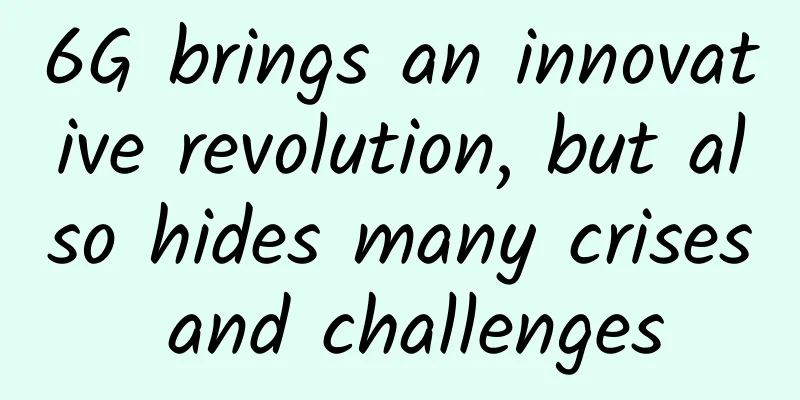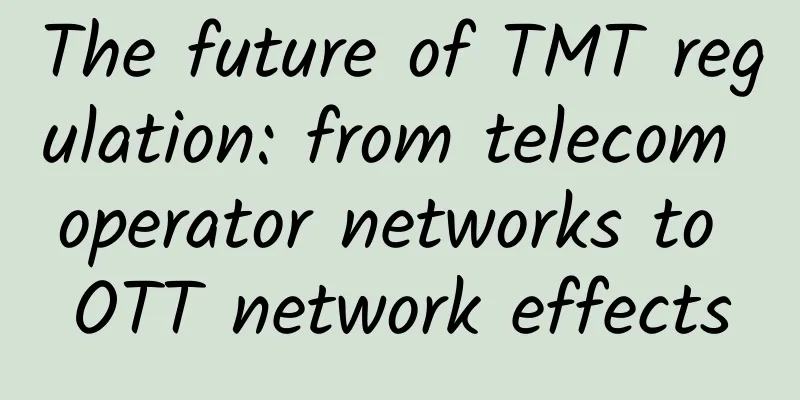6G brings an innovative revolution, but also hides many crises and challenges

|
Although 6G will not be implemented until 2030, the innovation revolution triggered by 6G technology will unleash the power of artificial intelligence, completely change the fields of healthcare and data transmission, and bring unprecedented privacy issues.
1. Spectrum6G technology requires a regulatory structure that massively expands the spectrum, which is the frequency that supports wireless communications data. 6G requires frequencies in the 100 GHz to 1 THz range, which will allow for extreme densification of communications systems, enabling hundreds or even thousands of simultaneous wireless connections with significantly higher capacity than 5G systems and networks. This spectrum revolution will require competent government regulation. In the current system, the United States has two separate federal agencies responsible for regulating spectrum: the FCC, which regulates private use of spectrum, and the National Telecommunications and Information Administration (NTIA), which regulates federal government use of spectrum. Currently, both the FCC and NTIA have jurisdiction over these higher spectrum frequencies, which means that these higher spectrum frequencies require meaningful coordination between the two agencies. 2. Artificial IntelligenceThe AI technologies that support 6G will allow for the creation of an “intelligent application layer” of interconnected devices, from self-driving cars to medical implants to geolocation sensors, all of which can communicate with each other in real time. This widespread coverage network will be supported by an “intelligent sensing layer”, a web of sensing and detection technologies that will rapidly collect and analyze large amounts of relevant data from these interconnected devices. 3. Healthcare6G is expected to enable fully automated surgery, rapid transmission of medical data, and fully implantable devices. But these technologies will also bring many lawsuits. For example, 6G-driven brain-computer interfaces (BCIs) allow patients to control machines with their brains, which in turn provides many innovations: complex prosthetics, better memory for patients with Alzheimer's disease, etc. However, the promise and potential huge profits of these innovations also come with huge potential responsibilities. 4. Infrastructure6G will also face many challenges in terms of infrastructure. Basically, 6G networks require a dense mobile network of transmitters and base stations. Since the transmission distance of 6G base stations will be less than 200 meters, it is estimated that 100 billion base stations will be needed worldwide to fully implement 6G services. For example: In the United States, the installation of 5G towers has already triggered a battle over local autonomy and property rights, so 6G is bound to bring more problems. In addition, in order to reduce the number of base station networks deployed on the ground, countries are looking to LEO satellites and building 6G networks. Once there are too many satellites in space, a series of transnational problems will inevitably arise, starting with the generation of space debris clouds and increasing the risk of satellite collisions. In the future, the world's major powers may cause some tensions in their efforts to seize interstellar advantages. V. PrivacyThe convenience brought by 6G also brings many risks to personal privacy leakage. The protection measures of quantum computing make the 6G system less compromising. In order to protect privacy, the United States has formulated relevant security guidelines and laws from the federal to state levels. However, laws usually lag behind technological innovation, so people cannot predict whether such security protocols are reasonable in the new field of 6G. In an interconnected society, a single data leak may bring catastrophic legal losses to the victimized company. In short, although the world is still some time away from the launch of 6G, the huge business opportunities and the ambitions of various countries to become the leader may make this competition more complicated. Therefore, starting to make plans now, whether it is investing in research and development or considering related legal issues, will affect the future direction of 6G. |
<<: TSMC factory suddenly outages! May lose 200 million yuan, 30,000 wafers damaged
>>: Five strategies for enterprises to start 5G digital transformation
Recommend
Don’t want to be one of the 70% who fail in digital transformation? Riverbed Application Performance Management Upgrade
Enterprises are in the stage of high enthusiasm f...
"Perceived and controllable applications that change on demand" F5 multi-cloud application service innovation online conference transcript
At 10:00 am on December 16, F5, the world's l...
[Understand Routing in Seconds] Now that we have an IP address, is a MAC address still necessary?
I wonder if you are confused: Why do we need a MA...
How do base stations go to the sky?
[[348593]] This article is reprinted from the WeC...
Can operators’ equity incentives motivate core employees?
[[384495]] In modern enterprises, equity incentiv...
In the 5G era, how can telecom operators lead the future through IoT services?
Major global telecom operators have been explorin...
An article explains the principles of Docker network
Overview Docker native network is based on Linux ...
5G healthcare development direction and challenges
[[403098]] The development of 5G healthcare has e...
Programming Practice: How to parse domain names in the program
[[403061]] This article is reprinted from the WeC...
Http protocol: Under what circumstances does an options request occur?
background: A new colleague asked me that there w...
Servervy: €1.5/month-2GB/10GB SSD/100M unlimited traffic/Netherlands VPS
The whois query of the domain name Servervy.com s...
An overlooked "secret weapon" in the 5G era may break the market monopoly
Recently, the Ministry of Industry and Informatio...
Threat attacks targeting home routers increased fivefold
In the first quarter of 2018, the number of cyber...
New optical spiral technology can increase information transmission rate tenfold
A new optical-based communications tool can trans...
Data Center Container Network Technology
Container technology is very popular and often me...









